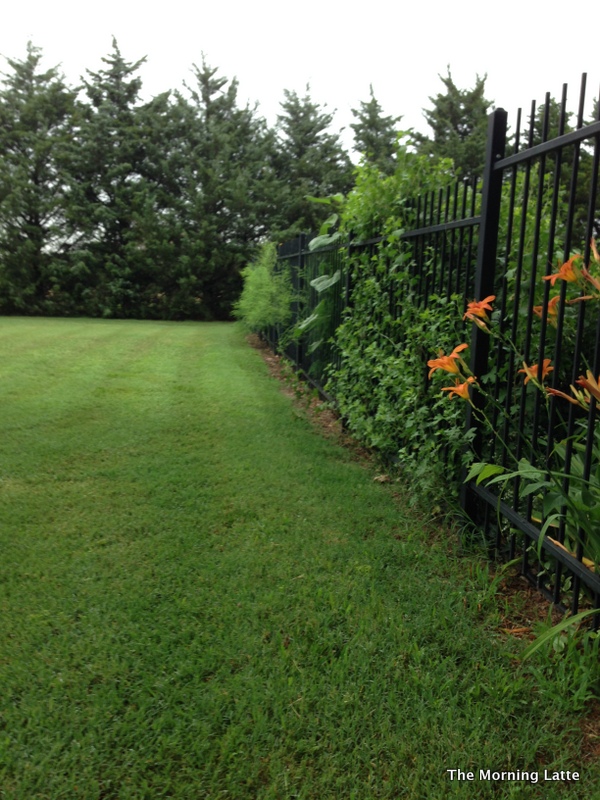The greatest summer ever continues to deliver.
Not only was it wonderfully cool again yesterday morning,
but I also get several more days off from watering.
A garden literally bursting at its seams.
Time to journal about where to garden.
What kind of space do you have for it?
If you have no yard, invest in some great pots
and start container gardening.
The biggest issue I have with container gardening is the constant
watering. In my climate, these pots can dry out quickly,
requiring water at least daily, if not more.
I don't really have a great collection of pots as
I do this only for seeding herbs, eventually transplanting
most, if not all, into the herb gardens. Sometimes I
will bring herbs in to cook with over
the winter.
If you have a small yard and think you don't have
room for a vegetable garden, think again.
Think about your flower beds.
One of the herb gardens earlier this year
Vegetables can be grown in your existing flower beds.
Mix them right in there among the flowers.
Putting herbs closer to the house keeps them
handy for cooking.
My herb gardens make up my "flower beds" along
two sides of my house. Being a practical person,
I see more use in growing edible landscape!
Also think about growing upward.
Growing any plant that vines onto trellises can
increase your space exponentially--cucumbers,
peas, many types of squash and pumpkins,
melons, etc, all all do well on trellises.
If you are lucky and have plenty of space to choose
from, here are some things to consider when deciding
where to put your garden(s).
Keep in mind the positioning of the sun during the
seasons. If the area is shaded in the spring, it will
take longer to dry and warm up before you can plant.
You also want a spot that is sunny at least half of the
day, and more is better. If you can't avoid some shade,
keep in mind a little shade in the hottest hours of the
day can be a real plus.
*
Avoid low-lying areas or you'll be dealing with too much
water which leads to fungus and rot. If it's in your
budget, consider raised beds...eventually. Pace yourself!
With all the rain we've had, I'm so glad we added the raised beds this year.
Drainage and soil aren't really issues so I chose to keep them to a minimal height.
*
Is water readily available? The less time and effort
you can spend lugging around garden hoses, the
happier you'll be. Ask me how I know.
*
Can you keep a compost nearby? You'll spend lots
of time going back and forth between the two areas.
*
If you can, just as with herbs, put the garden close
to your kitchen. You'll spend a lot of time going back
and forth between these two places as well.
*
What about wind break? A nice breeze can make working
in the garden so much more pleasant, but a hot wind
can dry it out quickly, and a big storm can do a lot of
damage--even knock over taller plants.
My garden has a solid row of trees to the north.
To the south there is a row of trees that are trimmed up
high and a row of currant bushes below, allowing
a breeze and protection.
*
Do you have room to expand? ALWAYS start out
small. You can add more space and other gardens
after a year or so learning what you can handle.
My expansion was phased over 5 years or so.
These two long, narrow gardens were added several years after I started
my current garden. Note also the heavy wind-break of trees to the north.
*
Obviously a spot with great soil would be ideal
but I would almost make this lower on the priority list,
especially if you're determined and patient.
The position of my garden fit about everything BUT
good soil--it was hard-packed, clay-like and full of weeds.
A few years of intense composting brought it around
nicely. One of my brothers still shakes his head
in disbelief when he sees the soil I have now!
When it comes to gardening,
where there's a will, there's a way!








Comments